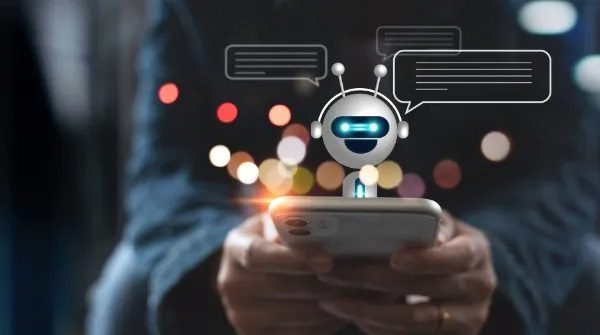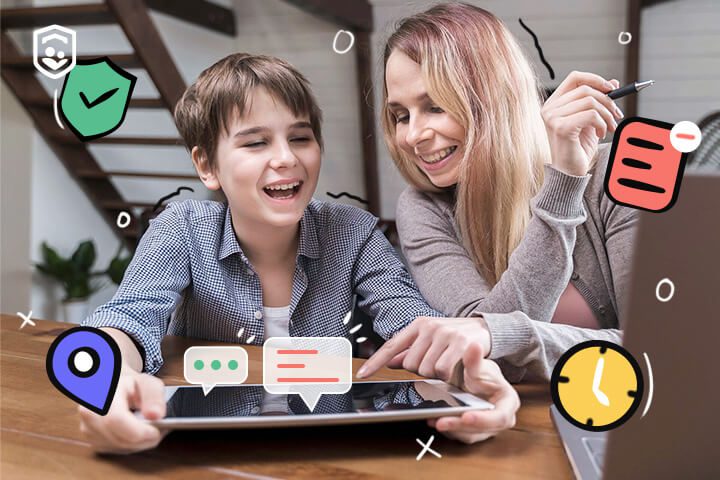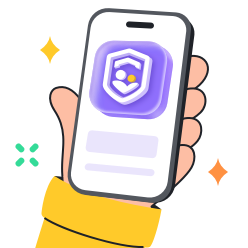While Character AI addiction can be more understandable when brainstorming, it can get out of hand when unregulated. It can easily turn into a habit that’s hard to break, which will ultimately destroy creativity, independent thinking and emotional intelligence. That’s why there has to be a balance between proper Character AI use and dependency on it.
In this piece, we will discuss why Character AI is addictive, how to spot the addiction, and its potential impact. We will then look at how to stop the addiction and guide children to healthier habits.
Why is Character AI so popular?
More advanced chatting features and easy access make AI chats addictive for many users of all ages, especially young teens. Character AI is a well-known AI chat model, primarily powered by LLMs (Large Language Models), which automatically generates personalized human responses.
The age rating of Character AI is 13+. It is recommended that this tool be used under strict parental supervision. However, when it comes to reality, things are quite different. Everyone can access it regardless of their age since the Character AI app does not have effective verification.
To know why it’s so popular, you need to understand these core elements and the role they play:
Personalized interaction and support
Character AI allows users to come up with diverse characters that cater to their needs in terms of friendship, support, and sometimes a mentor. You can also shape the interactions to ensure they fit the tone and how you want the response to be perceived.
Emotional escape
AI sometimes takes to balance our interactions and feelings, which is validation and compassion, to help deal with anxiety, stress, and loneliness. What makes people even more hooked is the fact that these AI characters never judge, argue, or reject your arguments.
Creative design and outlet
If you love creativity, then most likely Character AI will be your go-to choice. It gives you the chance to be inventive by creating characters and engaging in role-playing. In short, it lets you imagine the characters, design artworks, and help with writing.
24/7 access
Character AI is always available, making it a reliable source of human-like interactions. But with an AI chatbot, you can easily get emotional help and compassion at any time, as it operates 24/7.
Manage child’s online activities and set restrictions via a reliable parenting tool.
How to spot Character AI addiction? 5 red flags to watch for
When it comes to why c.ai is so addictive, you first need to know the difference between addiction and casual use. Once you get through that thought process, you can easily get the hang of the core red flags to watch out for. This is not to say that occasional long charts are harmful, but rather, there are patterns you should watch out for that might lead you to addiction.
- Spend hours daily chatting with AI: Spending too much time on character AI is a clear sign of addiction or dependency. Spending too much time on it is an automatic red flag, and changes need to be made.
- Emotionally dependent on characters: Individuals who rely on AI chats may often express their feelings to virtual characters and wish to get responses that they’ll be alright.
- Less real-life communication: Those addicted to Character AI don’t even realise that their real-life relationships get destroyed. This could be ignoring calls and avoiding social gatherings.
- Decline in productivity and focus: The other sign of over-reliance on AI is a reduction in productivity. People find it easy to drift from their original projects just to spend more time on character AI.
- Hiding or feeling guilty about usage: Individuals often delete chat history and hide how much they spend on these AI characters.
As Chokri Kooli explores in his article on Generative AI Addictive Disorder (“GAID”), a new form of digital dependency that differs from existing models. Character AI, by its very nature, involves extensive generative conversations, and the addiction to this platform falls under the umbrella of “GAID”.
Users use generative AI not only for entertainment or utility, but also for creativity stimulation, self-expression, and even companionship. This blurs the line between productive and compulsive use, making addiction signs particularly difficult to identify and self-regulate.
Potential impacts of unhealthy Character AI use



Learn about the dangers of excessive immersion in AI chats; it’s time to take action and make adjustments.
On mental and emotional health
Real-life interactions have a way of stimulating diverse thought processes, which help to achieve emotional and mental balance. AI lacks genuine empathy and continuous interaction with virtual roles might lead to unrealistic expectations from human relationships and heightened feelings of isolation. Over time, this can lead to anxiety, depression, and loneliness.
On academic performance and independent learning
Relying heavily on AI tools destroys the ability to think critically and self-directed learning. With time, it can also affect academic performance if not addressed properly.
On real-life relationships and interactions
Individuals who use Character AI for social comfort miss out on real-life interactions. With time, people will be detached from family or friends’ gatherings.
Online safety and privacy risks
In particular, kids and teens might unknowingly share personal information with AI systems that are not fully secure. Additionally, some AI, including Character AI, could generate NSFW characters and mature chats, which are inappropriate for minors.
Sleep, health, and daily routines get disrupted
People who spend too much time on digital interactions have sleep issues or sometimes disrupted daily routines. Cutting down on AI usage can also improve health through less stress and fewer headaches. If not managed at an early stage, it might lead to chronic health problems.
How to stop addiction to Character AI?
Stopping Character AI addiction is not an easy process and should not be taken lightly. But individuals can overcome it if they use the right options and follow through with them.
Set and stick to screen time limits
By now, most users have a clear idea of the amount of time they spend on AI chats. A quick guess is that it’s not good and might be necessary. What individuals can do is limit the time they spend on this app through restraint. They should set some ground rules and also implement the phone’s screen time feature to handle this situation.
Connect with real people
If a person has been using AI for a genuine connection, then they need to find a way to return to genuine interaction. Connect with friends and family members on a deeper level until AI doesn’t matter anymore. When people get that real communication, they will have more satisfaction than what they received from Character AI.
Find other ways to be creative or relax
There are many ways people can relax, other than being dependent on Character AI. Take up other activities like art or watching movies to relax. This will also give opportunities to grow and be creative individually.
Take breaks and adjust your routine
Even as individuals use Character AI, they can often take long breaks to avoid dependency. They can use it to brainstorm and sharpen their ideas but that should be about it. Don’t let it get past that to a point where it gets out of hand.
For parents: guiding teens to responsible digital habits
Teaching about responsible AI use requires parents to take an active role. AI has made many teens lose interest in real-life connections and independent thinking. The goal is not to indefinitely ban the use of AI but to help teens develop healthy digital habits.



Open communication
Have an open conversation and listen to their side of the story. Get to the bottom of the issue and also tell your side of the story and why you think it’s a bad fit. In the end, you’ll set up ground rules that will guide your teens on AI use.
Co-engagement and digital literacy
You should get involved in what your children use AI for. Take them through the effective use of AI and what they should look out for in the process. Tell them how to drift off inappropriate conversations and over-dependence on AI. Instead of blindly rejecting advanced AI tools, parents should encourage critical thinking and cultivate digital literacy to cope with the evolving digital world.
Promote a balanced lifestyle and activities
Give your child ideas on how to manage their time rather than being hooked on the Internet. Propose some activities that can lead them to social interactions with real people. This breaks the dependency on Character AI and leads them to become more social and interesting. It’s for that reason that you should seek professional help if the problem persists.
Use parental control tools
Reliable parental control tools can be a great assistant for parents to seek ways to help their kids break the overreliance on AI and online addiction. One app that has what it takes to track and manage your kids’ digital access is FlashGet Kids. This app allows parents to set daily screen time limits for kids and block specific apps on their devices remotely. It ensures that once the set time lapses, the screen automatically shuts off.
Bottom line
Nobody is disputing the importance of Character AI in brainstorming and getting ideas. Here is the thing: AI is here to stay, and we should learn how to live with it. But over-reliance is an issue that must be addressed. Some of the ways you can manage this are by giving more time to other activities and having open discussions with a professional. If AI chat addition also affects your child, then you can first use parental tools to manage it. The best option would be to use FlashGet Kids since it has digital management features like screen time.

